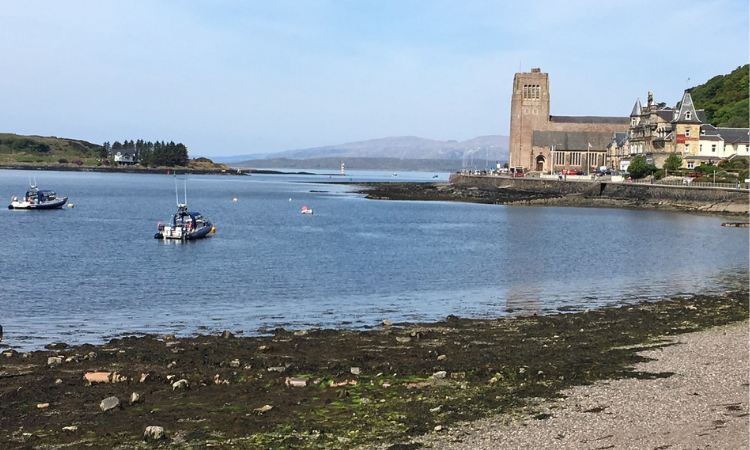The Lord still inhabits the praises of his people
Last winter my sister, Linda, and her husband came to Colorado for a visit. Don’t ask me how, but they managed to wedge it in amongst all their other globe girdling trips. As I’ve said of them before, throw a dart at a map of the world. And they’ve probably been there.
Over dinner, they mentioned that they were going to Scotland and England this spring with a group of friends. I took the opportunity to invite myself along. Graciously, they didn’t let the opportunity go by. Even though she introduced me to her friends as “my brother who tells corny jokes.”
So here I am in Scotland in the little seaside town of Oban, staying at the Alltavona B&B. My hostess tells me that in Gaelic the name means “beside the water.” Which is appropriate; I’m watching the ferry go by no more than 200 yards from my window.
Today, however, I’d had enough of the “cozy” 8 seater van, counting sheep and lochs, tasting whiskey, eating bangers and mash, and watching three thousand foot peaks go by that are all above timber line because we’re so near the arctic. So I stayed behind while the rest of the gang jumped on a small boat to go to an island to see puffins. Not my thing. It’s time for me to fire up the blog and reflect on the trip. Not to mention that I consider sea sickness, to which I’m so prone, a fate worse than death.
Rosary beads aplenty
I asked our hostess about an internet cafe. She was puzzled, “We have internet here.” I assured her that I preferred to work in a coffee shop. “Well, in that case, why don’t you try the chocolate shop? It’s just down the way.” So I walked down the bay, crossing the street a time or two, trying to avoid getting run over by looking the wrong direction. And there it was: the Oban Chocolate Co. The coffee was good. So was the scone and jam (too early for chocolate). But the internet connection was terrible. So, after some futile fiddling, I headed back to the Alltavona.
Halfway there, the bells of a squat, stolid church began clanging; it’s Wednesday morning here and time for mass. Even if far from musical, the bells were, at least, the real thing. I walked up a few stairs and went through the doors behind a couple of elderly ladies. Finding a place to sit was absolutely no problem. To describe the interior as austere is an understatement. Roughly quarried from the grey, volcanic rock of ages that underlays so much of this part of Scotland, the charcoal stone was only broken by the white lines of mortar that bound the structure together. Sun streamed through simple windows, faintly stained rose. The church had been built during the lean days following the end of World War II.
The tiny congregation in the cavernous structure was just finishing the rosary as I sat down. Several participants fingered their beads from where they prayed on wooden kneelers. Soon, a priest began saying the mass. His homily was brief. And even forgettable. But it was a welcome sabbath from days of restless movement, of random historical fact strung on random historical fact.
Brendan and Kenneth
I paused for a few minutes to read about the church when the service was over. The bells that had summoned me to worship were good Catholic boys: Brendan and Kenneth. The church is named after St. Columba, the Irish evangelist who brought Christianity to Scotland in the 6th century.
Christianity’s never been a popularity contest. Consider what they did to its founder. But no more could it be extirpated by hanging Jesus on a cross than it could be stamped out by a scant attendance at a Wednesday morning mass. Like the resurrected Christ himself, the Church is built for the ages. And the long haul.




